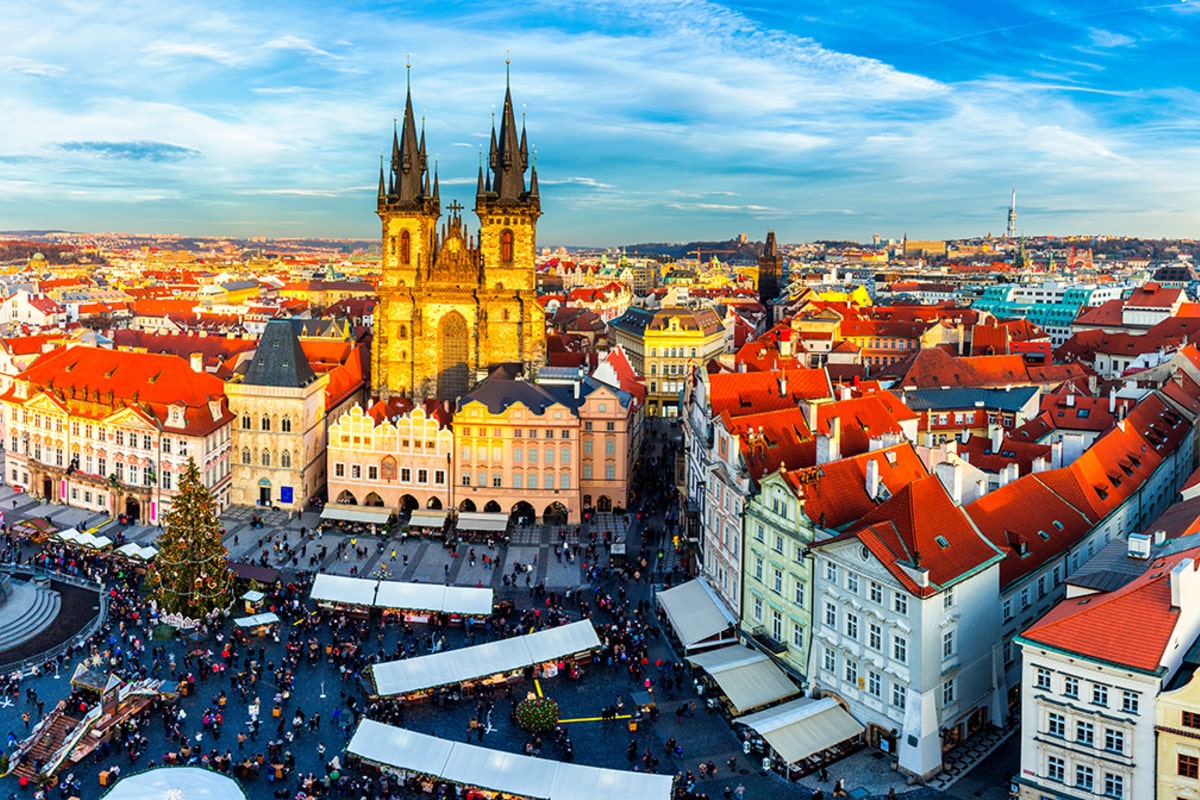Prague is not just the capital of the Czech Republic but also a true open-air museum, a city with centuries of history, romantic streets, Gothic towers, and a unique atmosphere. It attracts millions of tourists from around the world thanks to its stunning architecture, cultural depth, and countless legends and mysteries. The city on the Vltava River has repeatedly been the setting for historical events and a source of inspiration for artists and writers. Here are fascinating facts about Prague that reveal its hidden sides and rich character.
- Prague is known as the “City of a Hundred Spires,” though in reality there are over 500 towers of various heights and architectural styles, especially in the city center.
- Charles Bridge, one of Prague’s most iconic landmarks, was built in the 14th century under the order of Emperor Charles IV. According to legend, raw eggs were mixed into the mortar to strengthen the structure, which partly explains its remarkable durability.
- The astronomical clock on the Old Town Hall has been functioning since 1410 and is the third-oldest such clock in the world. Every hour, crowds gather to watch a miniature show featuring the apostles and allegorical figures.
- Prague Castle is the largest castle complex in the world, as confirmed by the Guinness Book of Records. It covers more than 70,000 square meters and includes palaces, cathedrals, gardens, and historic buildings.
- One of the oldest active synagogues in Europe, the Old-New Synagogue, is located in Prague. Built in the 13th century, it still serves as a place of worship and is a major Jewish heritage site.
- The Vltava River runs through the city and is crossed by more than 30 bridges. The most famous is Charles Bridge, but other notable ones include the Legion Bridge and Vyšehrad Bridge.
- Prague Zoo is considered one of the best in the world according to several international rankings. It is home to more than 5,000 animals and covers over 50 hectares.
- The city is famous for its historic cafés, many of which are over a century old. Café Slavia was once a favorite spot for Václav Havel, Franz Kafka, and other notable figures.
- In history, Prague once served as the capital of the Holy Roman Empire. During the late 14th and early 15th centuries, it was a political and cultural center of Europe.
- Prague’s metro system opened in 1974 and has only three lines, yet it serves over a million passengers daily. The stations are known for their unique architecture, with some resembling underground palaces.
- The Franz Kafka Museum, located in the Malá Strana district, offers an interactive and surreal experience reflecting the life and works of the writer. The atmosphere of the exhibition matches Kafka’s distinct literary style.
- The largest equestrian statue in Europe stands on Prague’s Vítkov Hill. The monument to Jan Žižka features a rider over 9 meters high and weighs more than 16 tons.
- Prague is one of the few cities where you can see Cubist architecture not only in museums but also on the streets. Czech Cubism is a unique phenomenon in European architectural history.
- Beer in Prague is more than just a beverage — it is a part of the culture. Breweries such as U Fleků have been in operation since the 15th century, and the Czech Republic consistently ranks first in the world in beer consumption per capita.
- Kampa Island is considered one of the most romantic places in Prague. It combines historic buildings, small parks, the Čertovka canal, and picturesque streets with galleries and cafés.
- The city is home to more than 60 theatres, including the famous National Theatre, which opened in 1881. It became a symbol of Czech national revival and retains this significance to this day.
- Prague is also a hub of street art. The John Lennon Wall has been a symbol of peace, freedom, and artistic expression since the 1980s.
- In the city center, you can find sculptures by contemporary Czech artist David Černý. His works, such as “Peeing Figures” and the “Rotating Head of Kafka,” draw both amusement and discussion.
- Prague has more than 100 museums, including the National Museum, the Museum of Alchemists, the Sex Machines Museum, and the Museum of Medieval Torture. Each offers a unique perspective on history and culture.
- Despite its modern infrastructure, Prague still has corners where time seems to stand still. Cobblestone streets, old lanterns, and Gothic façades create a fairy-tale-like atmosphere.
These incredible facts about Prague prove that the city is a true treasure trove of history, architecture, and culture. It can surprise not only a first-time visitor but also a seasoned traveler. You may not have known, but Prague is a living legend that reveals something new every time you visit. It is a place to see, feel, and fall in love with forever.





